DRAWING THE THE HUMAN FIGURE

Let's begin our study of the human figure by looking at the
human head. Here are its skeleton and muscle simplified.

Now here are the general geometric shapes that make up the human head.

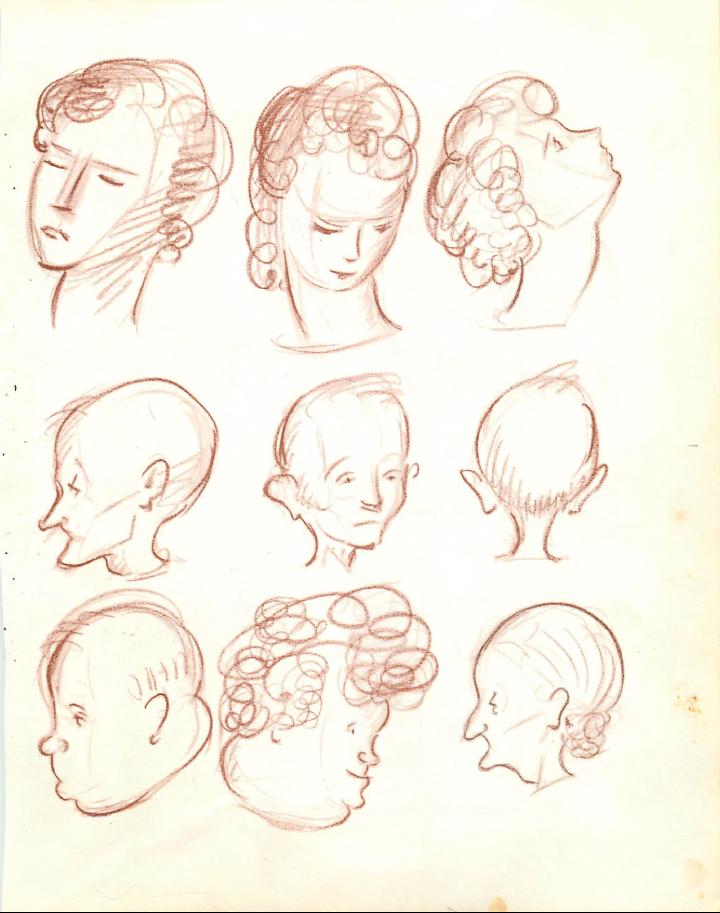
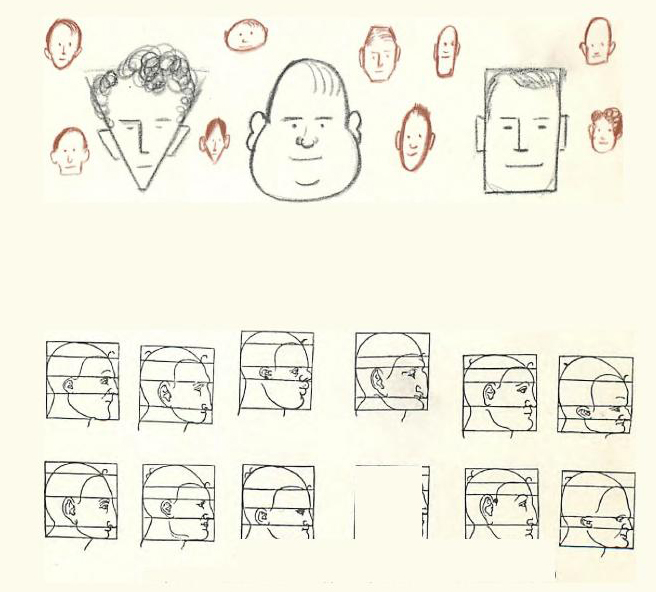
Proportions of various face types, by Albrecht Diirer (1471-1528)
The bones and muscles and geometric shapes are alike in every-
body. What, then, makes Mr. Smith look different from Mr. Brown?
It is the proportions of his bones and muscles and geometric shapes
their height, width, and thickness -- compared to those of Mr. Brown.
His color and hair make him look different too.
Albrecht Diirer made charts showing the different proportions of
different types of heads. So did Leonardo da Vinci and other great
artists.

Now let's study the simplified anatomy and geometry of the human figure and of animals.
Men and women differ chiefly in the geometry of their shapes. The shapes of a man are
usually angular, while a woman's shape is usually rounder.
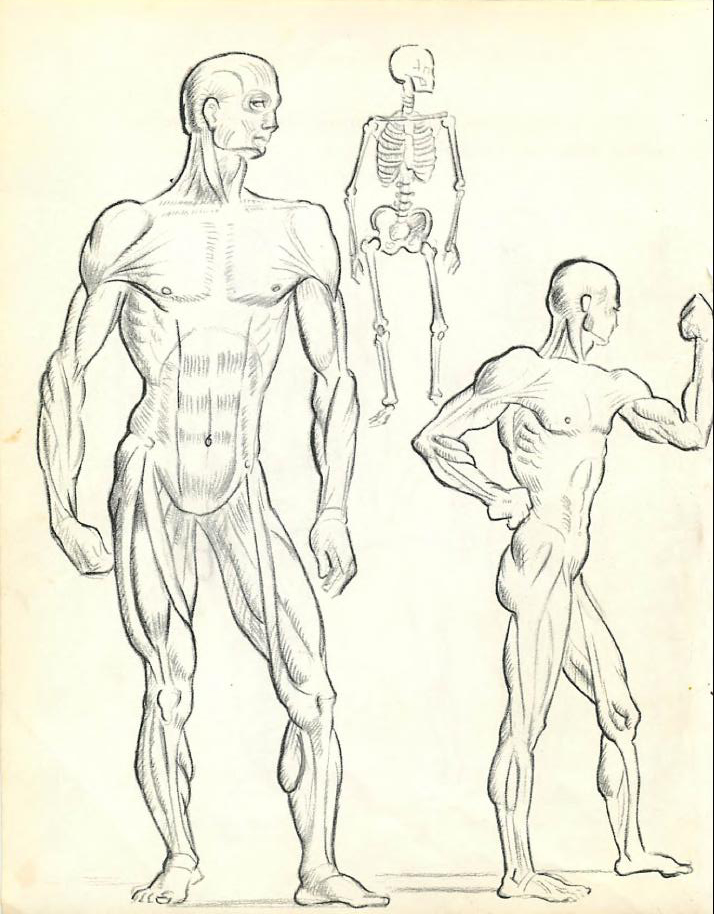
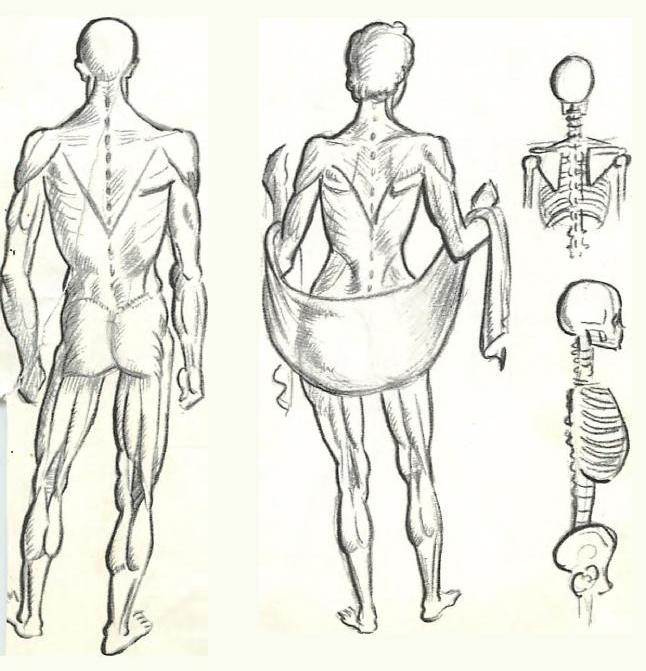
They also differ in the size of their bones and the strength of their
muscles. Men's bones are larger, their muscles stronger than those of
women. Women are more delicate and dainty.
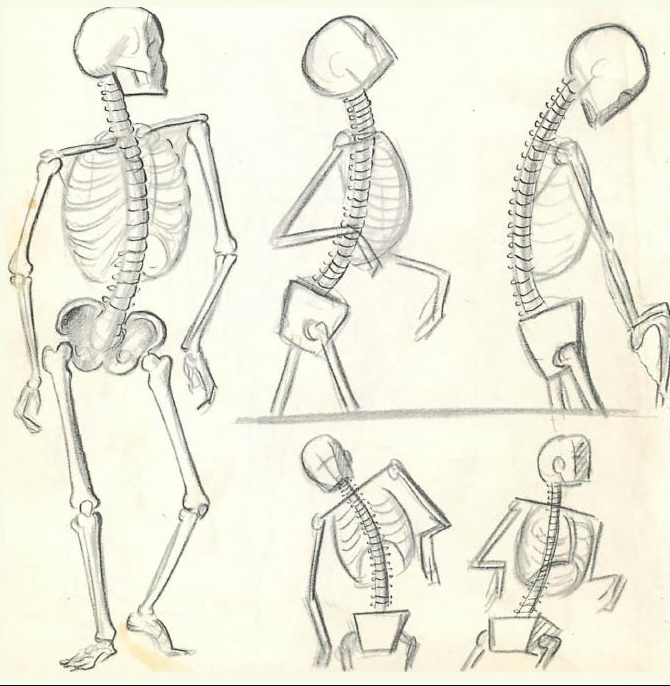
The human spine is made up of twenty-four bones called vertebrae.
It bends and twists mainly in the neck and waist. The part of our spine
that is attached to our rib basket bends very little when we bend forward
or back. The whole spine bends when we bend sidewards.
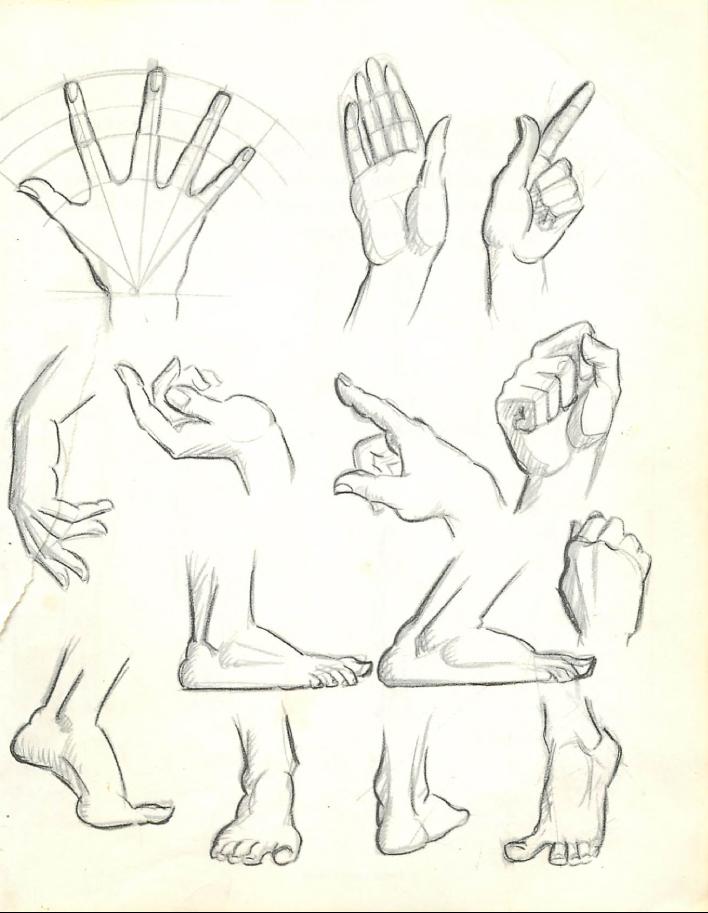
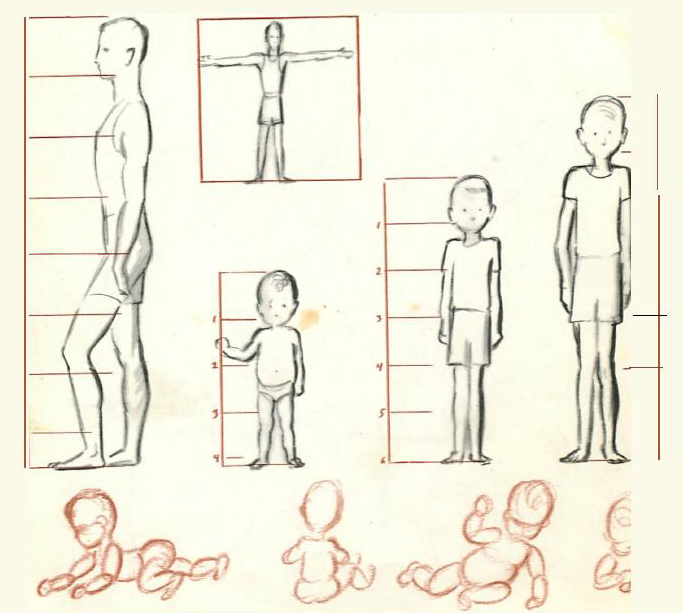
The bones and muscles of children are the same as those of grown
up people.
Only the proportions are different.
The average full-grown
man is about seven
and a half heads high.
A tiny baby's head is very
large in proportion to the rest
of his body.
As he grows, that proportion changes.
Babies are round
|















